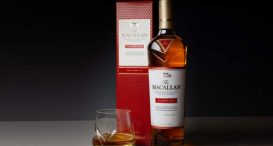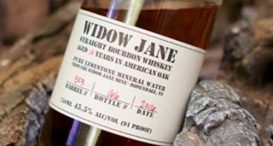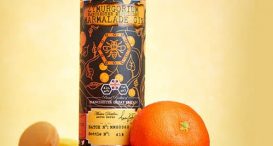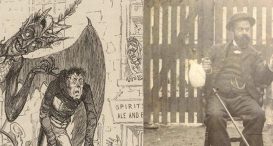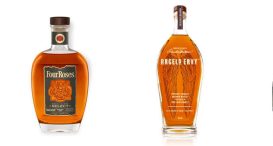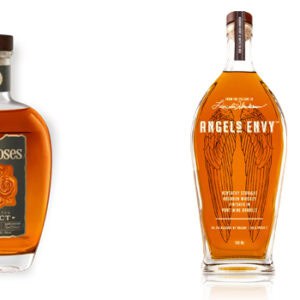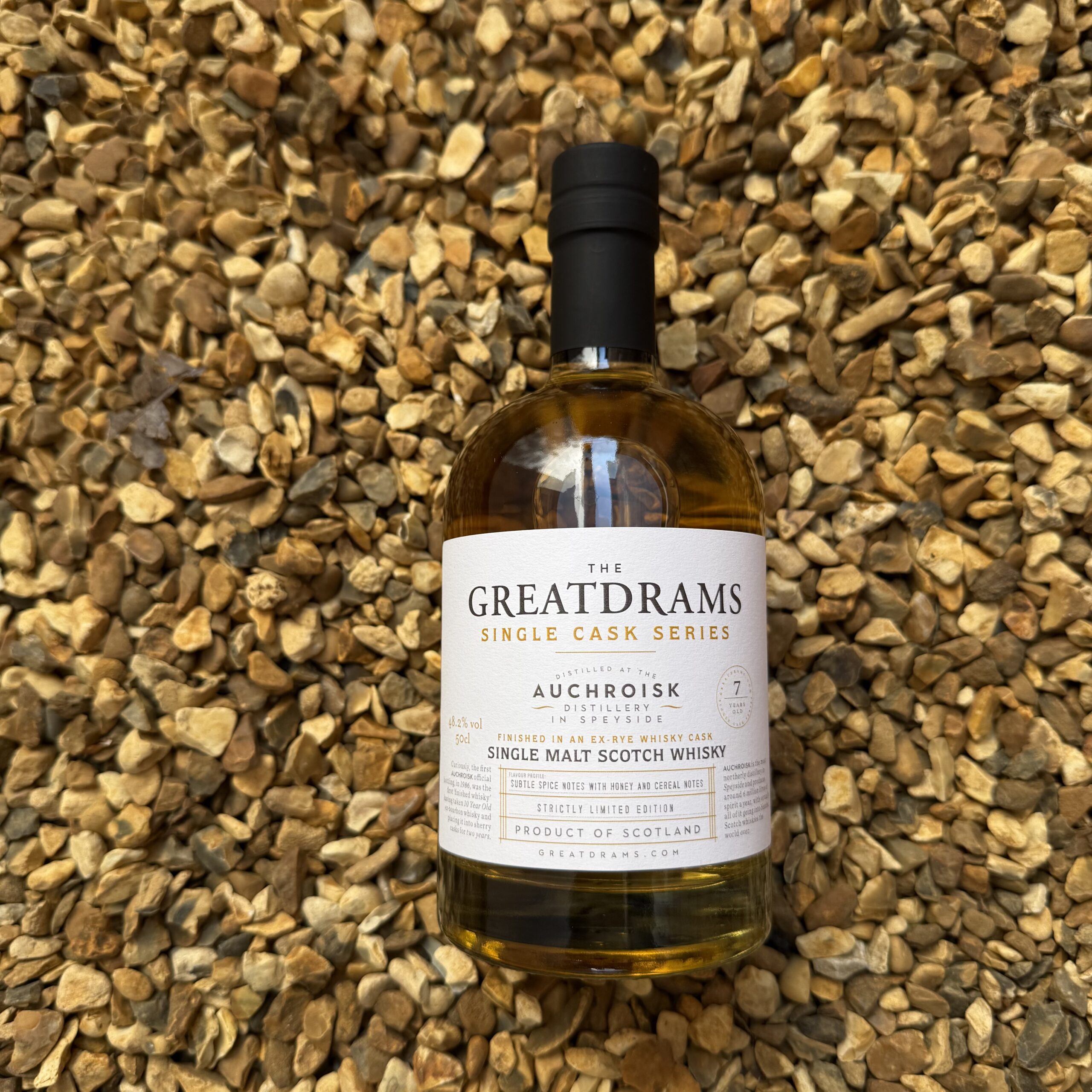The Ultimate Whisky / Whiskey Glossary for All Your Malty and Blended Terminology
ABV – Alcohol By Volume, or the strength of the drink measured by percentage of alcohol. Higher ABVs will almost certainly result in black outs and sore heads the next morning.
Age – how long a whisky has been matured from when it was first put into cask until it was bottled.
American Oak – a type of wood commonly used to make casks. Most likely used for Bourbon casks.
Angel’s Share – This is one all Whisky enthusiasts should know. Despite sounding like some kind of weird religious Whisky ritual, the Angel’s Share is simply the percentage of liquid that evaporates from barrels each year.
Barley – Type of grain used in recipes for whisky. Single Malt Scotch is made using only barley.
Barrel – a type of cask, made from wood and used to mature whisky
Blend – Literally what it sounds like, this is a mix of several different malts from several different distilleries, Made from both malt and grain whiskies.
Blended malt – A vatting of only malt whiskies, no grains, from more than one distillery.
Blending – mixing together whiskies to create a new expression.
Bond Storage – When whisky is held in warehouses under duty deferment.
Bourbon barrel – a 200 litre casks made from oak that is used to mature Bourbon before being used to mature other whiskies.
Brewing – Mixing grains and hot water, adding yeast and encouraging fermentation.
Bulk litre – how much liquid a container can hold.
Butt – a 500 litre oak cask that is commonly used in Sherry production and then used to mature whisky.
Campbeltown – a region os Scotch whisky, located on the Kintyre peninsula. Was once the most heavily distillery populated region in Scotland but now has only three distilleries: Springbank, Glen Scotia and Glengyle.
Cask Finish – This is when the Whisky is taken from its primary cask and placed in a second or third cask for the purpose of maturing it with more flavour. Like a finishing school for alcohol.
Cask Strength – Whisky that has been bottled at cask strength has a higher ABV than Whiskies that are diluted with water before being bottled. So if you’re enjoying a cask strength dram, just make sure you don’t enjoy it too much!
Charring – This is when the inside of a barrel is fired, but with real fire and not what happens when you steal your boss’s sandwich from the fridge (it was a really good sandwich in fairness). This can be done to varying degrees and encourages the liquid to interact more with certain elements in the wood. It is used especially in the production of Bourbon and results in a sweet vanilla flavour.
Chill Filtration – Chill-filtration is the process of lowering the temperature of Whisky to between -10 and 4 degrees, and passing it through a fine filter. This is in order to reduce cloudiness and residue. There are two schools of thought on chill-filtration, one in support of it and the other dead set against it.
Coffey still – A continuous still created by Aeneas Coffey in 1831. Allows for constant distilling with no need to break the process
Cooper – a craftsman who makes and restores casks
Cooperage – On first hearing this, one would be forgiven to think it involves copper of some sort, but alas, it is the place that barrels are made, and the man who makes them is called a cooper.
Corn – similar to barley, this is a grain used in whisky production.
Column Still – As opposed to a pot still, this is, in the most basic of terms, a tall block of kettles set on top of each other that allows the Whisky to condense at different levels. It creates a purer liquid at a higher ABV than pot stills, but is not as commonly used.
Congeners – These little compounds are what you owe most of the fantastic flavour of Whisky to. They are impurities that form during fermentation, but add flavour and character to malt.
Distillation – This is what occurs in column and pot stills. It is the process of heating liquid until the alcohol evaporates and condenses. Alcohol evaporates at a lower temperature than water, so this is a process of separating the two.
Dram – If you’re having a wee dram you’re probably in Scotland and enjoying some pretty fine Whisky. This is basically a name used to refer to a measure of Whisky, about the same as a shot.
Dunnage Warehouse – A very traditional warehouse with thick walls, earth floor and low roof. Allows for good air flow which is important in long term maturation.
Ethanol – Drinking alcohol. What the ABV accounts for.
Evaporation – occurs over time at a rate of around 2% in Scotland but varies in different environments and is how we get the Angel’s Share
Excise tax – A tax put on production of alcohol or sale of product.
Expression – A fancy way of saying another type of Whisky from the same range. Like the different parts of one whole; Whiskies are the parts and the whole is the range.
Feints – Not what happens when you have too much of the good stuff, this is the stuff at the end of the distillation process that not even the hardiest of drinkers would be able to stomach, and you can be damned sure the Irish have tried!
Fermentation – Yeast is added to create fermentation which is the process by which sugars convert into alcohol.
First-fill – When a cask is being used to mature Scotch for the first time, even if it has previously held other liquid such as Bourbon or Sherry.
Floor Maltings – Traditional buildings where barley was malted. Basically a giant hall to lay soaked grains in.
Grain whisky – a type of whisky that is made in a column still. Differs in flavour and alcohol quantity from malt whisky. Most grain whisky is used in blends but many are now bwing bottled as Single Grain Whiskies.
Grist – The product of finely grinding malted barley, this stuff is used in the mashing process.
Hogshead – a 250 litre cask that is very commonly used to mature Scotch
Highland – another Scotch region. Also includes islands except Islay. Has a very diverse and broad flavour profile.
Islay – an island that is a Scotch region on its own. Currently there are eight working distilleries on the island and most are well known for their incredibly peated malts.
Lowland – The southern Scotch region with only four distilleries: Ailsa Bay Glenkinchie, Auchentoshan and Bladnoch, although more distilleries are currently being built or opened here.
LPA – Litre of Pure Alcohol. This is used to measure the alcoholic content in a spirit
Low Wines – This is stuff that is produced during the first part of distillation in a wash still.
Malt – The stuff that makes grist! If you don’t know what Grist is you need to go back and pay better attention to this list. Malt is barley that has been fermented so partial germination occurs (bonus points for knowing where this occurs. Hint hint, it’s above grist).
Mash Tun – The tub where the Grist is mixed with water to dissolve fermentable sugars.
Master Blender – The person that distilleries entrust with the most precious of arts, the art of mixing Whiskies to make a more superior Whisky.
Maturation – When a Whisky is placed in barrels and left to soak up the flavours of said barrel.
New Make Spirit – This is Whisky before it has matured, when it is still fresh and naïve, yet to be corrupted by the evils of the barrel aged world.
New Make – Spirit under the age of three years that is distilled and then matured to become whisky.
Nosing – This is the art of smelling a Whisky to determine its flavour profile.
Oak – The wood that pretty much all barrels are made out of. In fact it’s illegal for Whisky to be matured in anything other than oak.
OLA – Original Litre of Alcohol as measured when the cask is first filled and before the Angels take their share.
Palate – What comes after nosing. Tasting. This is when you drink the Whisky in order to determine its flavour profile.
Peat – The natural matter that forms when decaying plants are compressed in boggy conditions.
Peated – This is when Peat (see above) is used to dry malted grains. It passes on some of its flavour and you can taste it in the resulting Whisky.
Pipe – A 500 litre oak cask used to mature Port wine and often used in whisky maturation after.
Pot Still – A giant kettle where the divorce of liquids occurs (seedistillation). This is the most common form of distilling liquid in Scotland.
Racked warehouse – Larger than dunnage warehouses and much more modern. Typically they are stacked up to eight casks high.
Refill – When a cask has already been used to mature whisky once or more times before, it is referred to as refill
Regions – Someone decided to split Scotland up so we could better identify all the different flavour profiles of Scotch. This resulted in several different Whisky regions that all fight to be crowned King of the Regions.
RLA – Regauge Litre of Alcohol. This is the reading done after the whisky has been matured to work out how much alcohol still remains in the cask.
Scotch – Whisky made in Scotalnd, matured more than three years in oak casks and with an ABV of 40% at bottling.
Small Batch – this is when Whisky is produced on a smaller scale to normal.
Speyside – The Scotch region that is most densely populated by distilleries. There are more than 40 distilleries in this region, including Glenfiddich and The Macallan.
Spirit – Any alcoholic drink that has an ABV of 20% or above
Triple distillation When a whisky has been distilled three times. Moe common in Ireland than Scotland although Auchentoshan is well known for triple distilling their malt.
Unpeated malt – Malt that has not been peated at any point of the malting process.
Vatting – Blending liquids in a vat. Commonly used at Glenfiddich. It is a process of vatting whiskies within casks that allows consistency in the final product.
Whisky/Whiskey – If you’re in Scotland don’t use the E to spell Whisky. If you’re in America or Ireland then do use the E. A way to remember this is if there is an E in the country name, there is an E in Whiskey.
Worm Tub – a tub with a long pipe snaking through it like a worm. This is where alcohol vapours are condensed.
Wort – This is the liquid that comes out of the mash tun that is full of sugars, waiting to be fermented.



